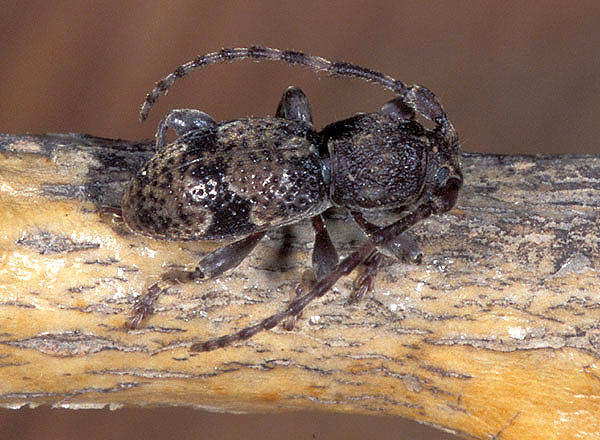Subfamilia: LAMIINAE / Tribus: PARMENINI

[Photo © David Navrátil & 8K postprocessing M.Hoskovec]
Parmena balteus, the species endemic to south-western Europe, is broadly polyphagous in deciduous trees (Tilia, Sambucus, Morus, Ficus, Juglans, Acer, Aesculus, Prunus, Nerium, Platanus, Quercus, Fagus, Hedera) and in herbaceous plants (typically Helleborus, Euphorbia or Asphodelus). Reported was also development in conifers (Abies, Picea, Thuja). Larvae feed in thin twigs (often with diameter 5-20 mm) or in the stalks of herbaceous plants. Adults, which emerge from spring to autumn, are crepuscular/nocturnal and can be found on the host plants.
Body length: 4 - 9 mm Life cycle: 1 - 2 years Adults in: April - September Host plant: polyphagous in herbaceous plants (typically Helleborus or Euphorbia), in deciduous (typically Hedera helix) and occasionally also in coniferous trees Distribution: Belgium, France, Italy, Switzerland
Depicted mounted beetles were reared from dead stalks of Euphorbia found in: ♂ Saint Vallier du Thiey environs (815 m a.s.l., Alpes-Maritimes department, Provence-Alpes-Côte d'Azur, France) on July 21, 2016; ♀ Aups environs (784 m a.s.l., Var department, Provence-Alpes-Côte d'Azur, France) on July 18, 2016. The living beetle was collected at night on dead stalks of Helleborus in South France.Collected by David Navrátil and M.Rejzek

[Photo © M.Hoskovec]
| Subfamilia | Lamiinae Latreille, 1825 |
| Tribus | Parmenini Mulsant, 1839 |
| Genus | Parmena Dejean, 1821 |
| Species | Parmena balteus (Linnaeus, 1767) |
